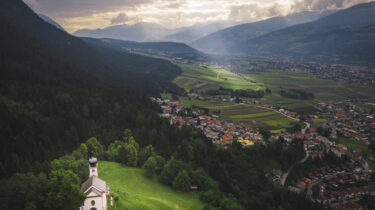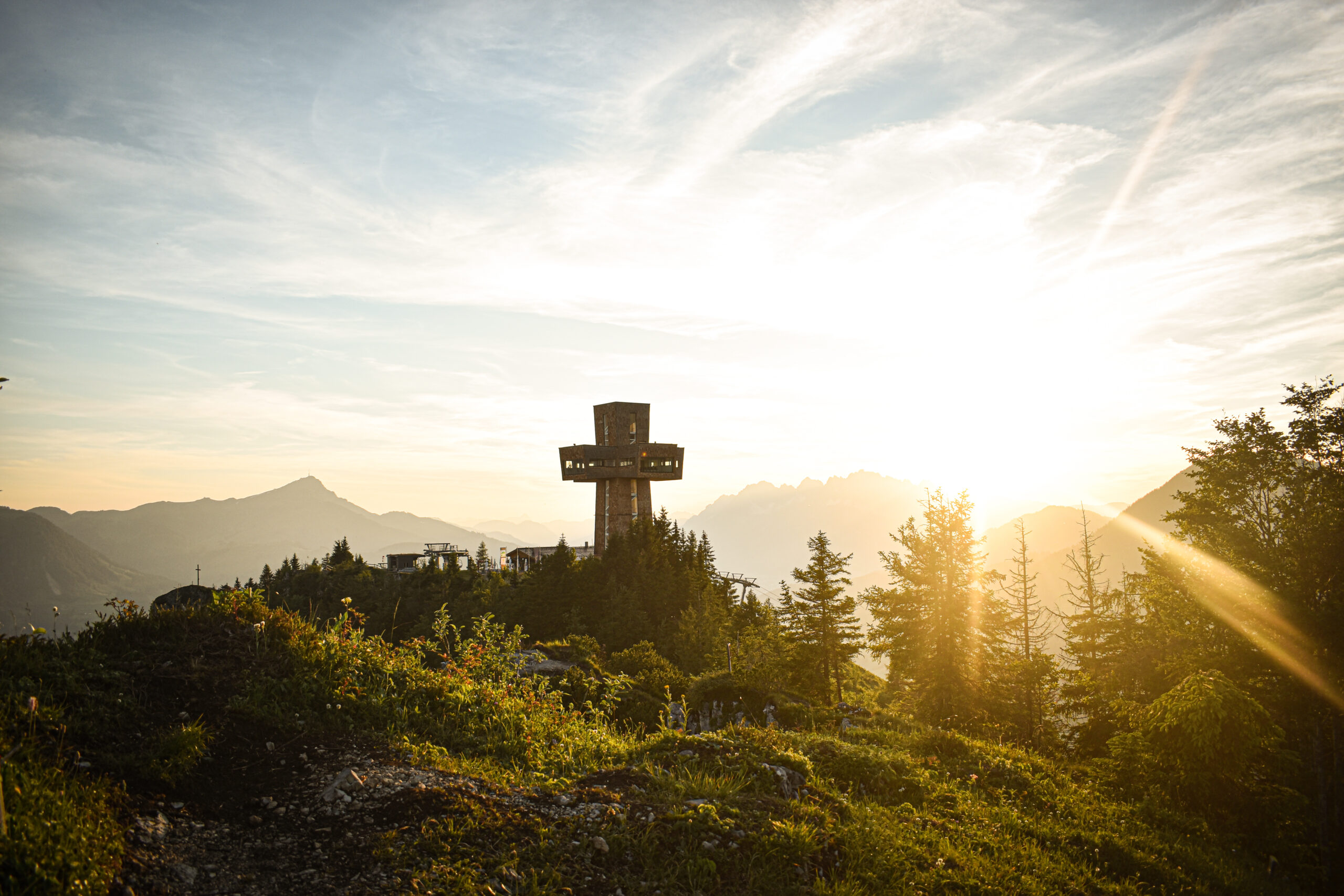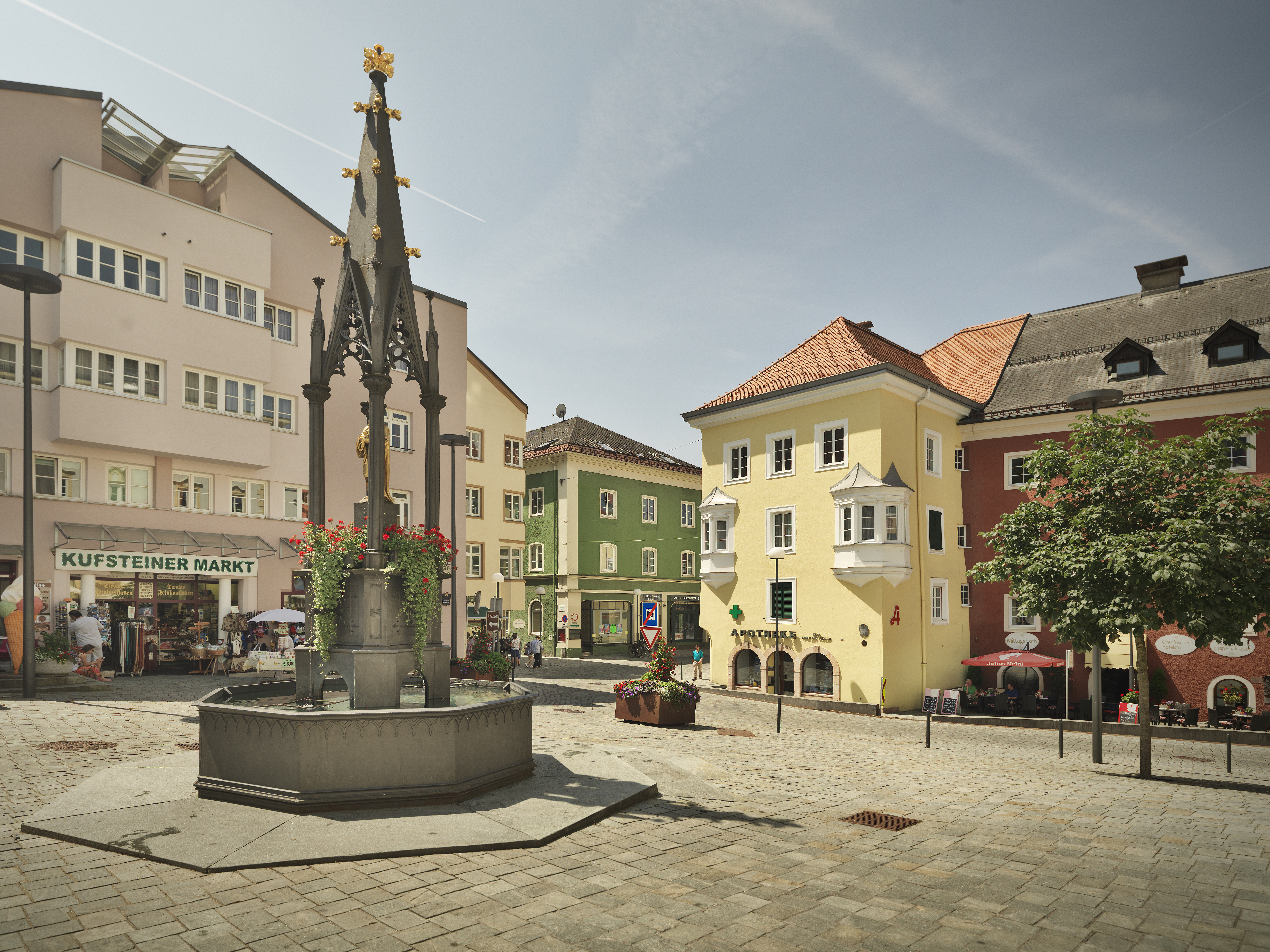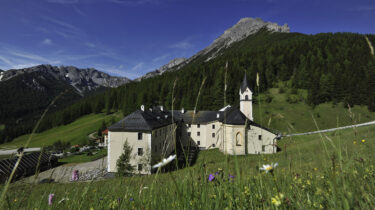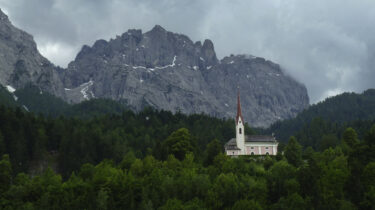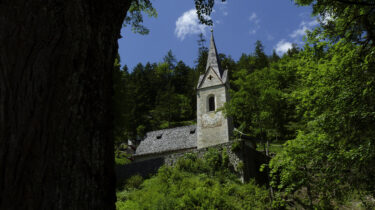A journey of self-discovery –pilgrimage trails in Tirol
Last updated on 27.07.2021
Pilgrimages are about more than just getting from A to B. Each step takes you away from the stress of daily life back to a simpler way of experiencing the world. A pilgrimage is always a journey of self-discovery. Tirol is home to a four major pilgrimage trails where hikers can enjoy a slower pace of life as they pass churches, chapels and monasteries from the Arlberg pass in the far west of the region to the spectacular landscapes of East Tirol.
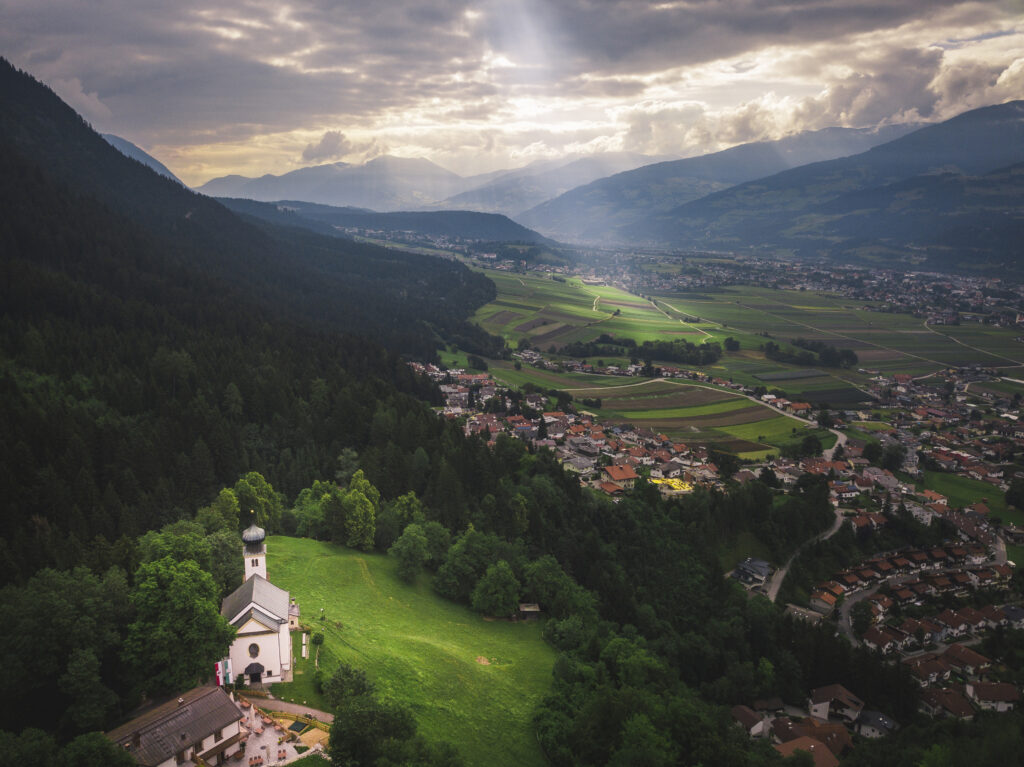
Sometimes the journey is just as important as the destination. Pilgrimages are one of those occasions – voyages of discovery where walkers have the opportunity to experience life at a slower pace and reflect on what is truly important. Tirol’s pilgrimage trails are a great way for hikers – religious or not – to explore this beautiful region in the Alps and at the same time learn more about themselves.
Four pilgrimage trails in Tirol
Unlike the super-popular pilgrimage trails in Spain, Tirol’s religious-themed long-distance hiking routes offer a more peaceful and reflective experience. Pilgrims in Tirol are likely to meet just a few other international visitors plus plenty of locals – a good opportunity for a friendly chat as you make your way through the wonderful alpine landscape side by side.
The European classic
Europe’s most famous pilgrimage trail, the Way of Saint James (also known as the Camino de Santiago), also passes through Tirol. Pilgrims follow the historic Via Tirolensis from the village of Strub/Waidring through the Inn Valley to St. Christoph next to the Arlberg pass – the highest point on the entire Way of Saint James. There are four churches en route which are dedicated to Saint James. Records indicate that people came to Tirol even in the Middle Ages to complete this pilgrimage.
The Tirolean stretch of the Way of Saint James measures 270 kilometres from start to end, with most of the walking on well-maintained forest trails and tarmac roads. These 270 km can be broken up into as few or as many stages as you want – there are plenty of places on the route where hikers can stay the night. Many churches also offer accommodation. Most walkers complete the trail in 11-13 days.
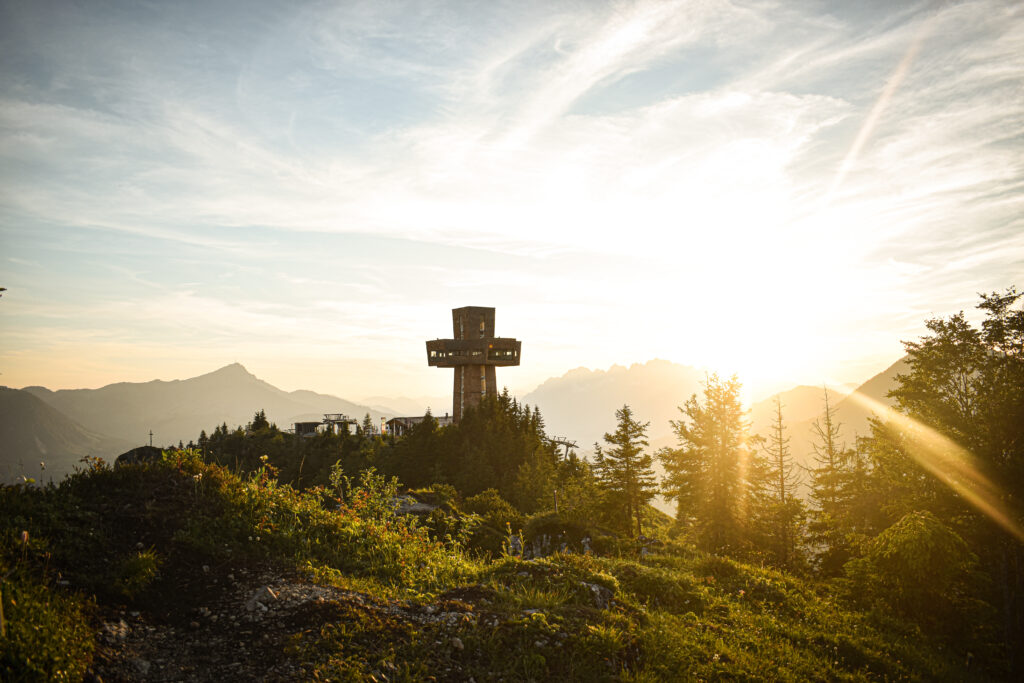
Cross-border adventures
Part of a cross-border EUREGIO project, Mary Trail Number 2 brings together six separate circular hikes to form a single long-distance route along which hikers will find numerous chapels, churches and places of pilgrimage linked to the Holy Mary.
The trail measures 309 kilometres in length. It leads from the Marienbrunnen fountain in Kufstein to Kössen, Lofer, Fieberbrunn, St. Johann in Tirol, Going and past the craggy peaks of the Wilder Kaiser Mountains to Kramsach. It is here that walkers cross over into Bavaria and continue to Bayrischzell and Kiefersfelden before crossing back into Tirol for the final push to Kufstein. This is a relatively easy trail, though walkers need good overall fitness. It is generally completed in 13 days, with between 20 and 29 kilometres of walking each day. Accommodation along the route is plentiful.

Into the Alps
A relatively recent addition to Tirol’s pilgrimage scene is the Romedius Trail. Created in 2014, it takes pilgrims into high alpine terrain and offers truly spectacular views from start to finish.
The adventure starts at the Romedikirchl church in Thaur and concludes in San Romedio in the Val di Non, a valley in the northern Italian province of Trentino. Pilgrims follow in the footsteps of the medieval saint and hermit Saint Romedius. En route they will pass a series of pilgrimage locations such as the Maria Waldrast church and monastery south of Innsbruck. The challenging terrain means pilgrims must have experience of hiking, must be sure-footed and need a good head for heights to negotiate some of the more exposed sections. Alpine equipment is a must. The Romedius Trail measures 180 kilometres from start to finish, with almost 10,000 vertical metres of elevation gain. It is normally hiked in 12 stages, with each stage ending back down in the valley close to various accommodation options.
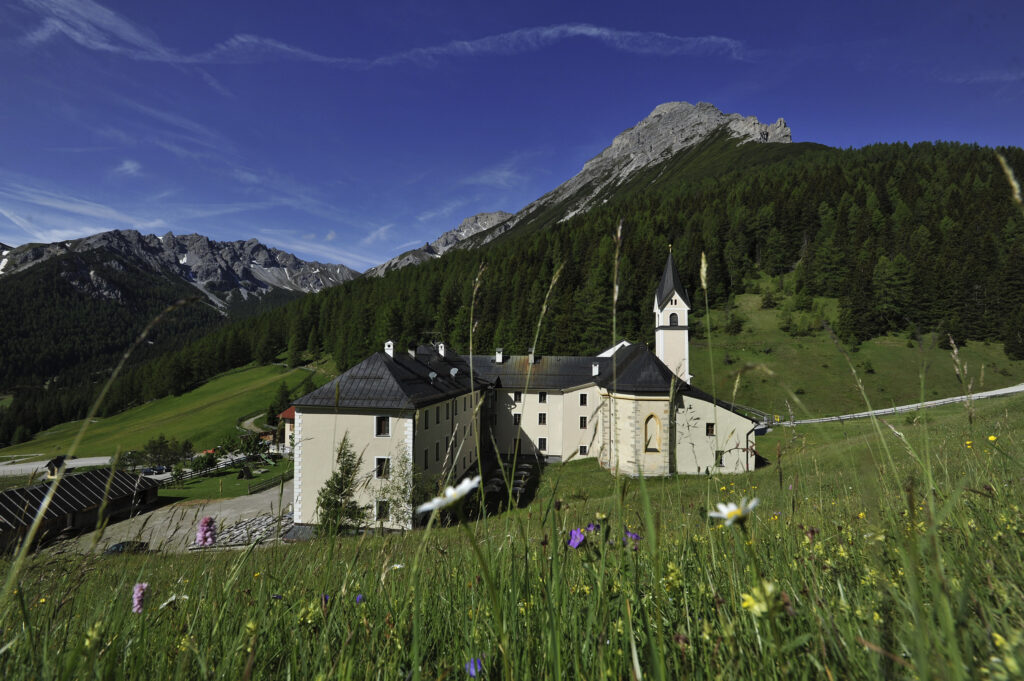
A different motto each day
Another pilgrimage trail in Tirol taking in some of the region’s most spectacular landscape highlights is the High & Holy route in East Tirol. This long-distance hike leads along many ancient trails and runs for almost 200 kilometres from Lavant in East Tirol (Austria) via Innichen/San Candido in South Tirol (Italy) to Heiligenblut in Carinthia (Austria). En route there are lots of chapels and places of pilgrimage, but also quiet spots in the mountains where hikers can sit and reflect. Each of the nine stages has its own motto with inspiring stories and exercises.
From start to finish there are 13,000 vertical metres of elevation gain to be conquered. If that sounds a little too much, each stage can be hiked individually. This means pilgrims can complete one, two, three, five, etc. stages, with each stage finishing down in the valley. The terrain is challenging and requires experience of hiking in the mountains, good overall fitness and alpine equipment. It is also possible to book an experienced local guide for one or several of the stages.
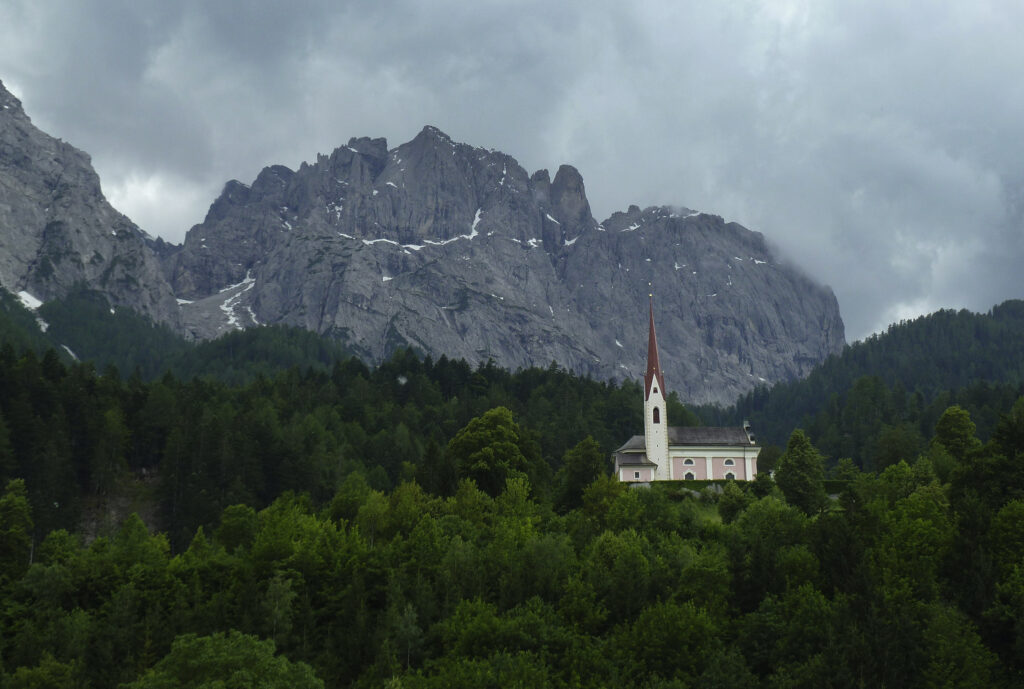
Places of pilgrimage – rest and reflection
As well as the pilgrimage trails described above, Tirol is also home to many places of pilgrimage. Most are dedicated to Mary, the mother of Jesus, and were established after she appeared to a local resident at the respective location.
Maria Locherboden, for example, is a pilgrimage church perched on the beautiful Mieming Plateau high above the Inn Valley. It is said that here, in the 18th and 19th centuries, the sick were miraculously cured. The church is still visited today by many believers in search of relief from physical ailments.
Enjoying a spectacular location at the foot of the Serles mountain, Maria Waldrast is home to a church and a monastery. It is not only one of the oldest places of pilgrimage in Tirol dedicated to the Holy Mary, but in fact one of the highest churches of pilgrimage anywhere in Europe. Believers and non-believers alike flock to this 400-year-old site to enjoy the fine views and peaceful atmosphere.
Last but certainly not least, the journey to the St. Georgenberg monastery is an experience in its own right. Walkers must negotiate 354 stone steps plus a number of wooden bridges through the Wolfsklammgorge near the village of Stans to reach this place of pilgrimage. This is part of the Way of Saint James and provides a spectacular approach to Tirol’s oldest place of pilgrimage.

Pilgrimages in nature
Sometimes the most powerful moments of reflection come about not at a church or chapel but simply in the heart of nature, when the majestic beauty of the alpine landscape makes one reflect on what is truly important in life.
One such place is the Tischoferhöhle, a cave in the Kaisertal Valley near Kufstein. The 307 steps into the valley means pilgrims need strong legs, but the experience is well worth it. Archaeological investigations have revealed that this cave provided shelter to humans many thousands of years ago. Today, visitors can walk 40 metres into the cave and enjoy the unique subterranean atmosphere.
From deep down to up high, our final recommendation is the Windschutzpavillon on the Stripsenkopf peak in the Kaiser Mountains. This small construction covered with a roof is close to the Stripsenjochhaus hut and can be reached from there via a narrow mountain trail. Walkers will need sturdy footwear and a good head for heights. The trail should only be used in good weather. The view from the Windschutzpavillon extends out over the Inn Valley – the perfect place to let your thoughts wander.

For more information on pilgrimage trails, places of pilgrimage and spiritual sites in Tirol visit: www.tirol.at

